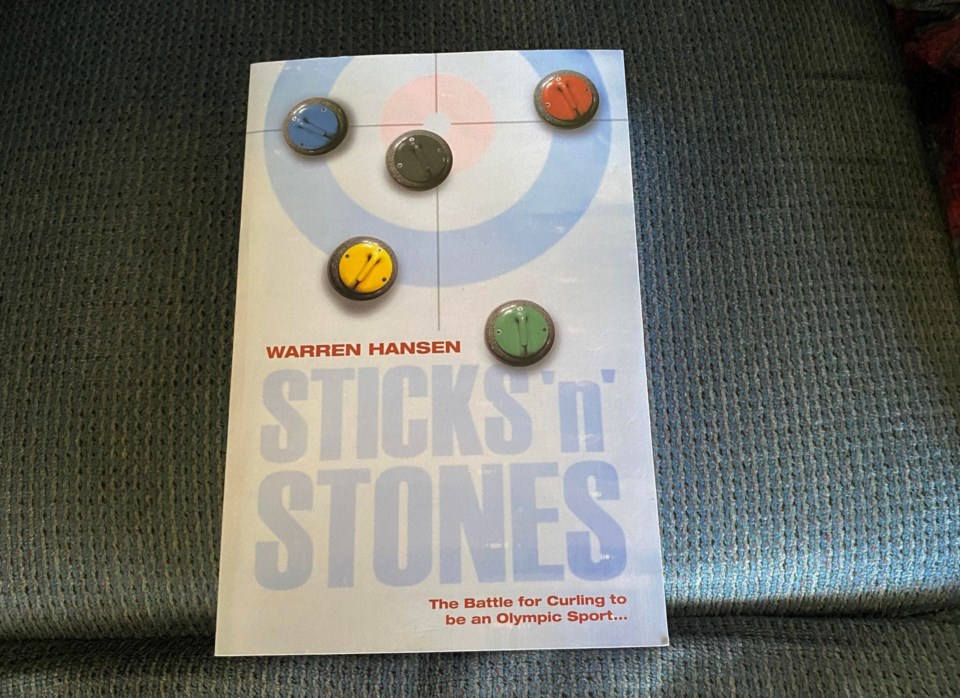YORKTON - In a country where the standing joke is winter is eight months long followed by four months of tough sledding it is hardly surprising we are generally fans of curling.
Names like Ed ‘The Wrench’ Werenich, and Al ‘The Iceman’ Hackner, might sound like characters out of an old Francis Ford Coppola film, but curling fans will know them as revered men of the rings – such is the way of being a sports fan in this country.
So when Sticks ‘n’ Stones: The Battle for Curling to be an Olympic Sport by Warren Hansen came out, it was one that grabbed my eye.
For any sport, being welcomed into the fold as an Olympic event is seen as the ultimate acceptance of that sport internationally, and as a sure way to grow interest in the sport every four years.
For curling it was a massive step.
But, that doesn’t mean it was an easy step. The list of sports coveting Olympic acceptance is very long.
But writer Hansen was one who believed in the Olympic dream. Himself a notable curler in the 1970s, Hansen thought curling had merit to be in the biggest sports show there is, and he went to work to make it happen.
Hansen joined forces with Ray Kingsmith in the late 1970s to change this, setting out to get curling into the 1988 Winter Olympics in Calgary as a demonstration sport.
But that was a rather easy step, allowing curling crazy Canada to demonstrate a sport was still a long way from being a regular medal sport at the Olympics.
“Three times curling applied to the International Olympic Committee (IOC) for Olympic medal status. And three times, the IOC turned them down,” detailed the page dedicated to the book at friesenpress.com. “Finally in June of 1992, at the IOC General Assembly in Barcelona, Spain, curling received the blessing of the executive committee as a full medal sport.”
It is that journey Hansen writes of in Sticks ‘n’ Stones revealing what it took for curling to gain full medal sport status.
“I was very involved in the whole process,” he related as we chatted on the phone recently, adding through all the hoops and hurdles he kept a lot of information.
With boxes of material a book was always in the plan.
“I fully intended at the time to tell this story because I thought it was pretty important,” related Hansen.
In general, as a fan, I have always thought curling has been a sport willing to adapt and change over time, something that no doubt helped it become more TV friendly, which in itself is huge. Games shrunk from 12 ends to 10, and often eight now, and have implementing the free guard zone put strategy into the game.
When the conversation turned to the adaptive nature of curling, Hansen was quick to agree the game has evolved, but suggested far more needs to change yet.
“There’s all kinds of things to be done,” he said, starting with efforts to “tighten things up” in terms of time to play a game.
Hansen said in his mind sports cannot exceed 120-150 minutes if they want to be of interest to people today, adding that is something “for all the sports”. He said whether it’s curling or football or baseball “they all have to figure that out.”
If they don’t young people today will tune out and look elsewhere, he said, adding even with the juggernaut NFL the “average age (of fans) is well over 50.” Catching the attention of younger eyes will need change. If change doesn’t come a sport might well fade into something inconsequential.
Hansen said in the case of curling there also needs to be an understanding the game that Brad Gushue and Kerri Einarson play does not translate back to local curlers. The skill levels are so different.
So why have a free guard zone locally to complicate a game, he asked, adding it’s the same in golf, why are the cups the same size for elite pros and weekend players?
One change Hansen said that is recent and positive in mixed doubles, because it only needs two players, but then why not singles and three-player version of the game?
“All these things encourage play,” he said.
And there are other changes too, suggested Hansen.
“There has to be a casual element to it, so people can play when they want to not when you tell them to,” he said.
So why not have curling clubs open with sheets you can book a time to play like golf?
“There are times when that should be an option,” he said.
Similarly, leagues are not the answer for everyone. Many just want to casually show up to play on their own.
“With men’s golf if it was only league play I wouldn’t go,” offered Hansen.
So the sport has made steps, like finding its way to the Olympics, a journey Hansen’s book covers in-depth, but the author said the future of the game means greater change needs to come.
“Yes curling has made changes, but in some areas it hasn’t made them fast enough,” he said.
The book is available through the usual sources, or check out www.warrenhansenauthor.com

